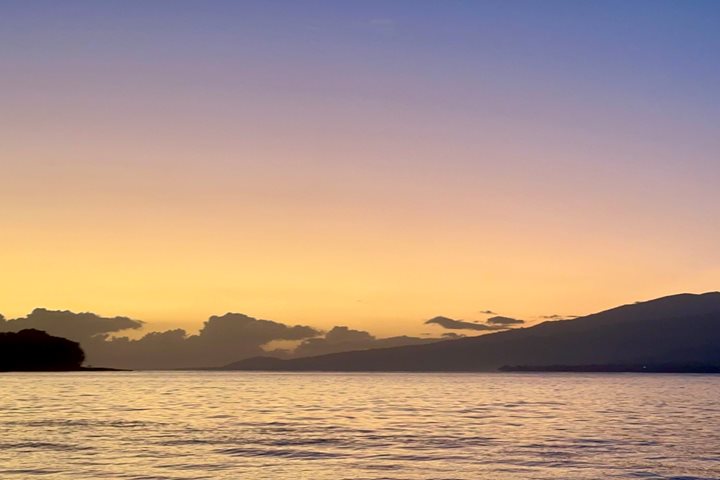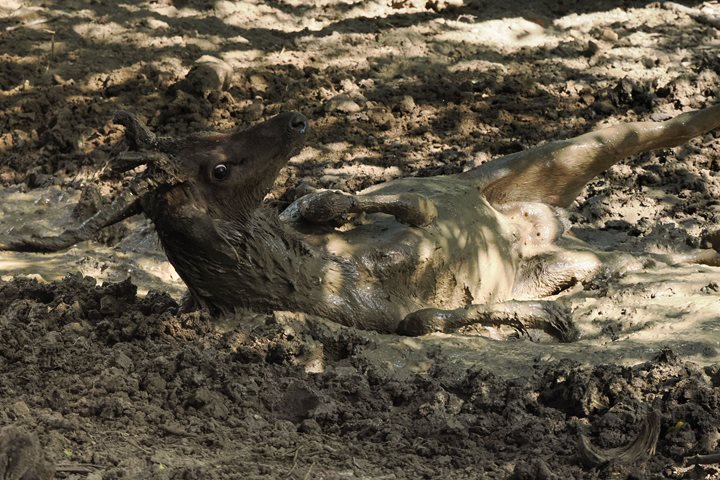Early this morning the National Geographic Orion sailed into Camden Sound. There is no road access and the nearest town is Kalumburu, 268 kilometers to the east. Camden Sound is bounded by the Bonaparte Archipelago to the east, the Buccaneer Archipelago to the west, and Montgomery Reef to the south. This area has received worldwide recognition as a crucial breeding and calving area for humpback whales. With almost 30,000 individuals, it is considered to be the single largest humpback population in the world.
Humpback whales dotted the area. On the port side a mother and her newborn calf were swimming nuzzled next to one another. There were distant blows and breaches all around. But the highlight was watching three whales that were surface active. These waters are the breeding and birthing grounds for this herd. Males posture with one another for the opportunity to escort females ready to mate. One animal was breaching and the percussion could be heard on the bow of the ship. Blows, fluke-up dives, and head lunging increased the intensity of the encounter. Finally we turned away from the whales and anchored in Camden Harbour.
This afternoon we were privileged to visit the historical remains of a failed attempt to tame the hostile Kimberley. Records show that in 1864, 124 Victorian sheep farmers attempted to colonize this area. They had been led to believe that there were verdant pastures for their flocks and that Camden Harbour offered a new beginning. Instead they found the harsh reality was they had been sold a pipe dream. In less than a year, 25 members of the settlement and all but 80 of the sheep had perished. Nature has gradually reclaimed the ghostly ruins of the settlement. A visit to nearby Sheep Island contained the graves of a few of the ill-fated settlers.
Though it may be poor for sheep, the terrain proved perfect for the boab tree. These trees are an iconic species in the Kimberley region. Boabs range from 5 – 15 meters in height and lose their leaves during the dry season. The plant has a wide variety of uses, and most parts are edible. Aboriginal people obtained water from hollows in the tree. Newcomers to this area simply delight in the swollen bottle-shaped trunks of this tree alternately named by Aboriginals, gadawon.









